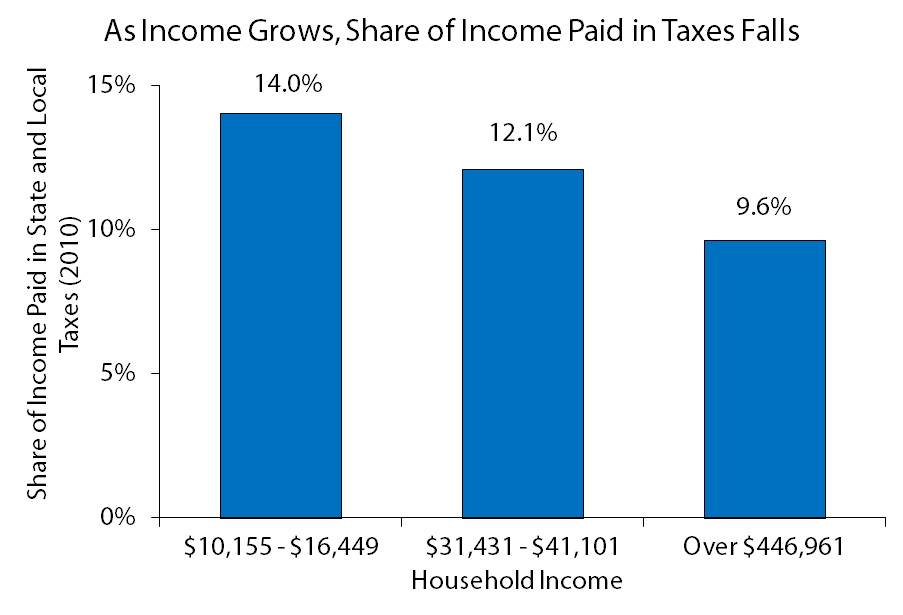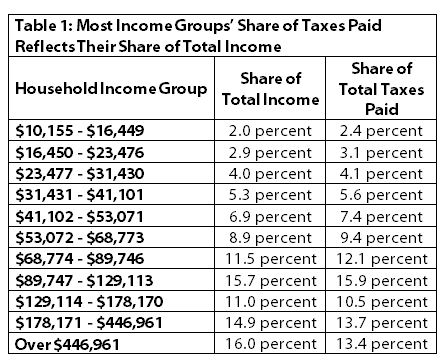We've updated our analysis of Minnesota's tax system to reflect the state's new Tax Incidence Study. Unfortunately, we find that troublesome trends continue.
- The share of income that Minnesotans pay in state and local taxes declines as income grows.
- Minnesota's tax system does not raise enough revenues to avoid a cycle of frequent budget deficits.
Three different kinds of data from the Tax Incidence Study demonstrate the gap between what low- and middle-income Minnesotans pay in taxes and what those with the highest incomes pay.
First, the share of their incomes Minnesotans pay in total state and local taxes (their "effective tax rates"). The one percent of Minnesota households with the highest incomes (over $446,961) paid 9.6 percent of their incomes in state and local taxes - significantly less than the 12.1 percent paid by middle-income households ($31,431 - $41,101).

Second, we can compare each income group's share of total taxes paid to their share of total income. Most Minnesota income groups pay in rough proportion to their share of total income, although low- and middle-income groups pay more than their proportionate share; groups with incomes above $129,114 pay less than their proportionate share.
While high-income Minnesotans pay a significant share of all taxes in the state, it falls short of reflecting their share of total state income. Minnesota households with incomes over $446,961 had 16.0 percent of total state income, but paid 13.4 percent of total state taxes.

And third, the Suits Index. The Suits Index is a measure of how regressive or progressive a tax system is. Overall, Minnesota's state and local tax system is regressive at -0.060. Fourteen states have state and local tax systems that are less regressive than Minnesota's.
The time for tax reform is now. An income tax increase focused on the highest-income Minnesotans, such as the "fourth tier" proposal in Governor Dayton's tax plan, is one critical part of tax reform that seeks to make our tax system more fair. It would narrow the gap between the share of income that most Minnesotans pay in taxes and what the wealthiest Minnesotans pay. It's also an important step in addressing the deficit and investing in a high-quality workforce and other building blocks of our future prosperity.